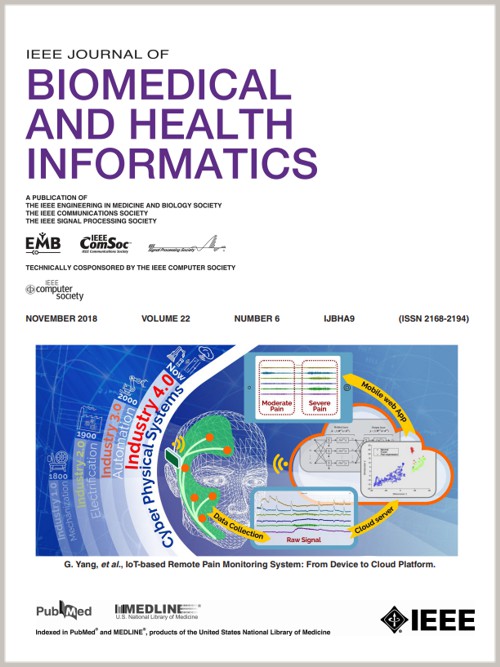rU-Net, Multi-Scale Feature Fusion and Transfer Learning: Unlocking the Potential of Cuffless Blood Pressure Monitoring With PPG and ECG
IF 6.7
2区 医学
Q1 COMPUTER SCIENCE, INFORMATION SYSTEMS
IEEE Journal of Biomedical and Health Informatics
Pub Date : 2024-10-18
DOI:10.1109/JBHI.2024.3483301
引用次数: 0
Abstract
This study introduces an innovative deep-learning model for cuffless blood pressure estimation using PPG and ECG signals, demonstrating state-of-the-art performance on the largest clean dataset, PulseDB. The rU-Net architecture, a fusion of U-Net and ResNet, enhances both generalization and feature extraction accuracy. Accurate multi-scale feature capture is facilitated by short-time Fourier transform (STFT) time-frequency distributions and multi-head attention mechanisms, allowing data-driven feature selection. The inclusion of demographic parameters as supervisory information further elevates performance. On the calibration-based dataset, our model excels, achieving outstanding accuracy (SBP MAE ± std: 4.49 ± 4.86 mmHg, DBP MAE ± std: 2.69 ± 3.10 mmHg), surpassing AAMI standards and earning a BHS Grade A rating. Addressing the challenge of calibration-free data, we propose a fine-tuning-based transfer learning approach. Remarkably, with only 10% data transfer, our model attains exceptional accuracy (SBP MAE ± std: 4.14 ± 5.01 mmHg, DBP MAE ± std: 2.48 ± 2.93 mmHg). This study sets the stage for the development of highly accurate and reliable wearable cuffless blood pressure monitoring devices.rU-Net、多尺度特征融合和迁移学习:释放无袖带血压监测与 PPG 和 ECG 的潜力。
本研究介绍了一种利用 PPG 和 ECG 信号进行无袖带血压估算的创新型深度学习模型,在最大的清洁数据集 PulseDB 上展示了最先进的性能。融合了 U-Net 和 ResNet 的 rU-Net 架构提高了泛化和特征提取的准确性。短时傅立叶变换 (STFT) 时频分布和多头关注机制有助于准确捕捉多尺度特征,从而实现数据驱动的特征选择。将人口统计参数作为监督信息,可进一步提高性能。在基于校准的数据集上,我们的模型表现出色,实现了出色的准确性(SBP MAE ± std:4.49 ± 4.86 mmHg,DBP MAE ± std:2.69 ± 3.10 mmHg),超过了 AAMI 标准,并获得了 BHS A 级评级。为了应对无校准数据的挑战,我们提出了一种基于微调的迁移学习方法。值得注意的是,只需传输 10% 的数据,我们的模型就能达到极高的准确度(SBP MAE ± std:4.14 ± 5.01 mmHg,DBP MAE ± std:2.48 ± 2.93 mmHg)。这项研究为开发高度准确可靠的可穿戴式无袖带血压监测设备奠定了基础。
本文章由计算机程序翻译,如有差异,请以英文原文为准。
求助全文
约1分钟内获得全文
求助全文
来源期刊

IEEE Journal of Biomedical and Health Informatics
COMPUTER SCIENCE, INFORMATION SYSTEMS-COMPUTER SCIENCE, INTERDISCIPLINARY APPLICATIONS
CiteScore
13.60
自引率
6.50%
发文量
1151
期刊介绍:
IEEE Journal of Biomedical and Health Informatics publishes original papers presenting recent advances where information and communication technologies intersect with health, healthcare, life sciences, and biomedicine. Topics include acquisition, transmission, storage, retrieval, management, and analysis of biomedical and health information. The journal covers applications of information technologies in healthcare, patient monitoring, preventive care, early disease diagnosis, therapy discovery, and personalized treatment protocols. It explores electronic medical and health records, clinical information systems, decision support systems, medical and biological imaging informatics, wearable systems, body area/sensor networks, and more. Integration-related topics like interoperability, evidence-based medicine, and secure patient data are also addressed.
 求助内容:
求助内容: 应助结果提醒方式:
应助结果提醒方式:


